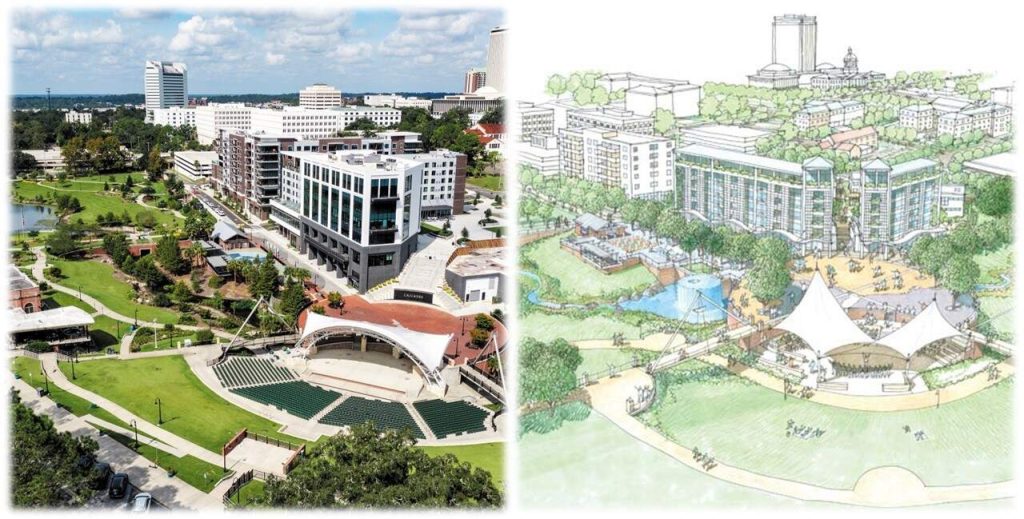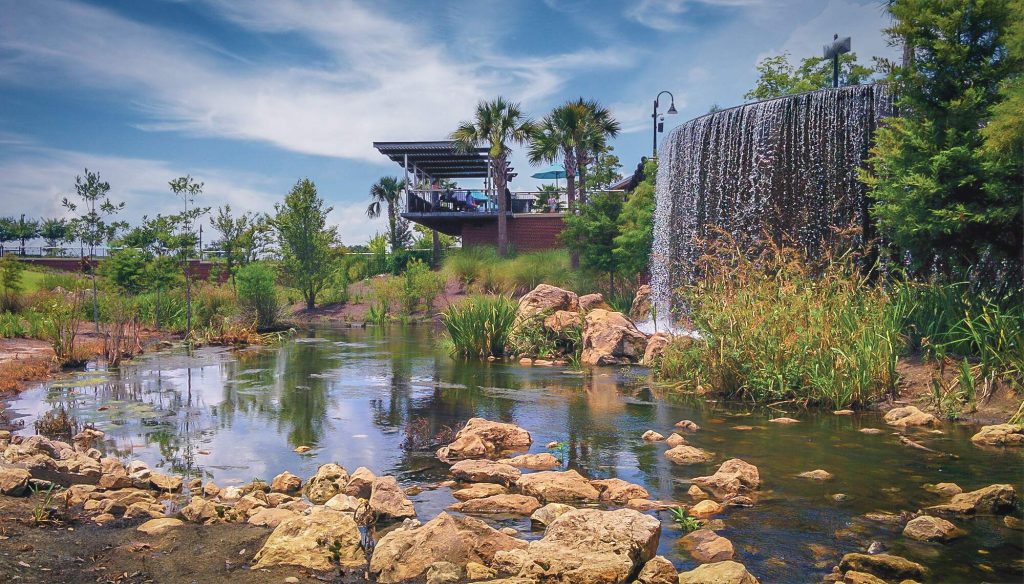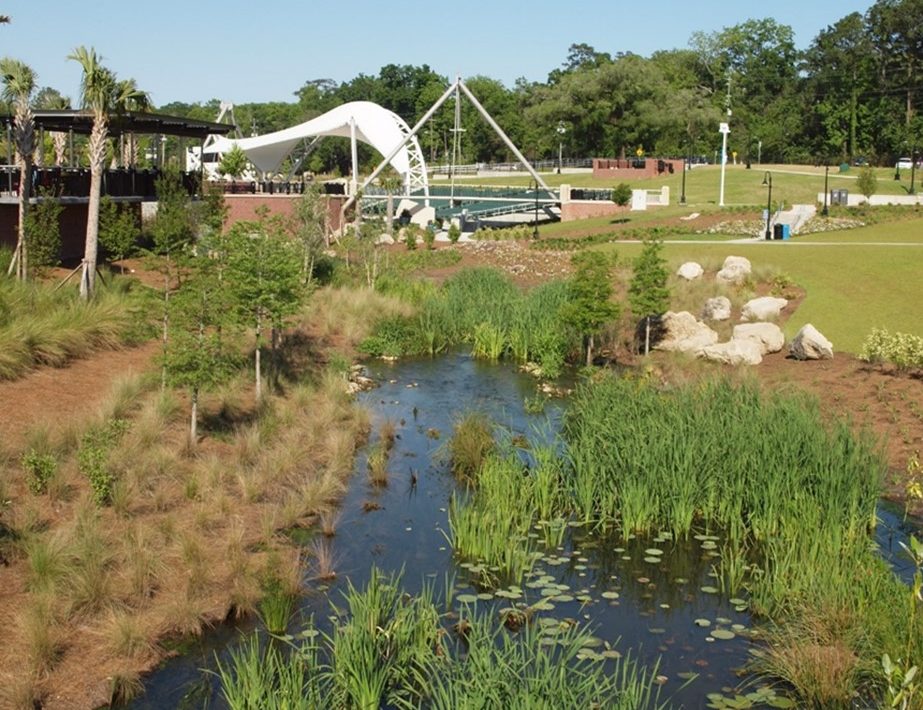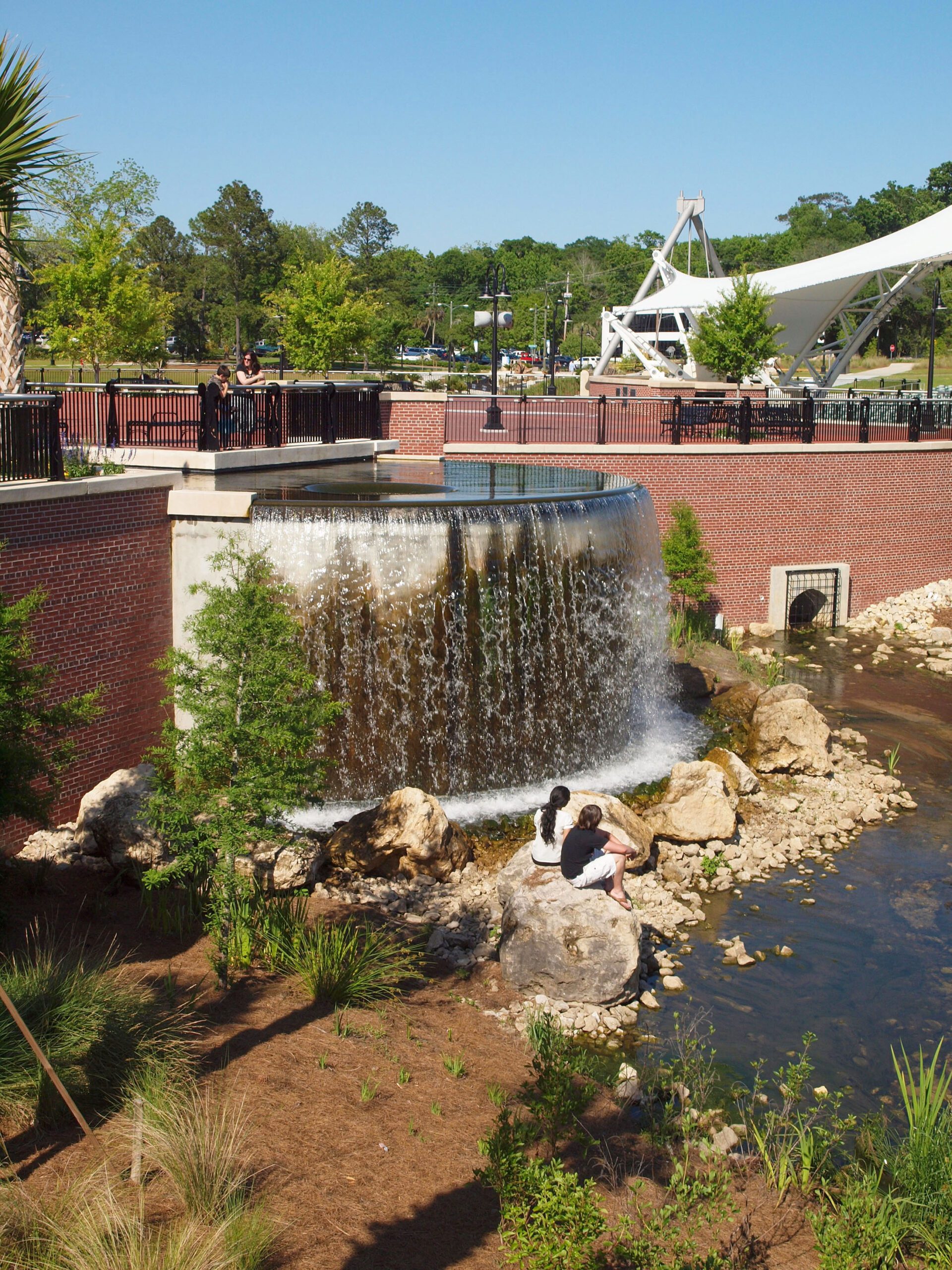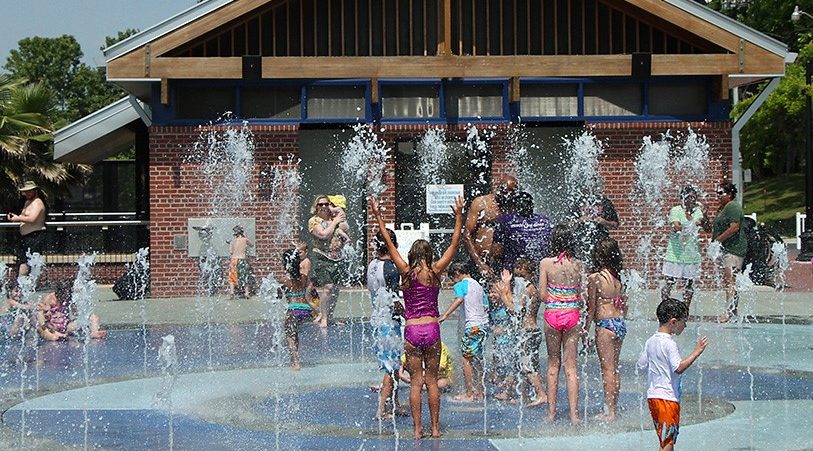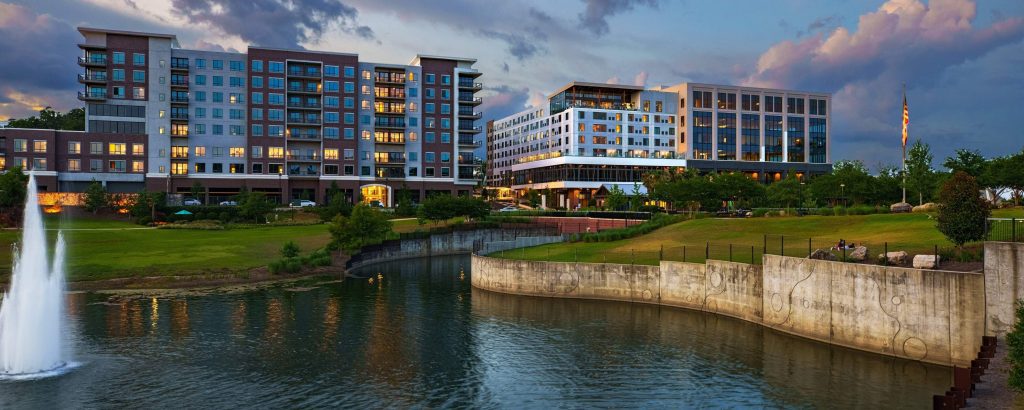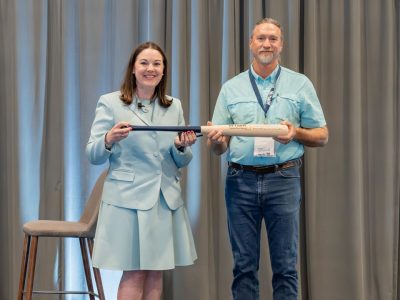Capital Cascades Park: A Vision to Improve Stormwater Management Within a World-Class Park is a Reality in Tallahassee
The Capital Cascades Park footprint encompasses 25 acres in downtown Tallahassee.
Capital Cascades Park was a vision that became reality.
It was a grand vision to transform a low-lying, industrial EPA Superfund site in the heart of Tallahassee, Florida—which flooded frequently—into the ultimate combination of dynamic stormwater management facility and world-class downtown park in a single footprint.
Cascades Park was funded primarily through penny sales tax dollars managed by the Blueprint Intergovernmental Agency of Leon County and City of Tallahassee. The community has been delighted with the completed project, and it embraced Cascades Park as the preeminent facility in the Tallahassee Parks and Recreation system.
Genesis (now Halff) was instrumental in the planning and design of the Capital Cascades Trail and Cascades Park from 2002 to 2014. The Capital Cascades Trail Master Plan called for a comprehensive program for new passive recreation development and extensive stormwater management facilities in a 5.2-mile corridor through downtown Tallahassee’s southeast quadrant. The centerpiece of the new urban greenway corridor, Cascades Park, was designed to occupy the former Superfund site along with other adjacent property.
The St. Augustine Branch stream and a cascading waterfall historically conveyed stormwater through the site, but as urban growth continued, the cascade was lost. The stream was transformed into a hardened, open-channel stormwater conveyance with retaining walls in many areas.
A Time for Sustainable Solutions
The Cascades Park design produced a unique new stormwater management system that emulates the original St. Augustine Branch stream bed, creating a healthy, sustainable stream ecology with re-vegetated stream banks that contribute to the treatment process as water flows throughout the site.
The Stormwater Master Plan encompassed the drainage basin north of the park site and the St. Augustine Branch for a total contributing drainage area of 989 acres. This large, densely developed upstream drainage basin generates significant runoff volumes at high velocities.
The “floodable” park and its amenities were designed around the overarching stormwater retrofit master plan.
The comprehensive stormwater design required complex analysis:
-
A detailed existing conditions Stormwater Management Model (SWMM) analysis was completed and calibrated to determine the critical storm event.
-
Extensive alternatives analysis was performed for multiple design options to address the chronic problems.
-
Complex design was required to address the stormwater volume and velocity in order to protect park infrastructure while addressing upstream and downstream issues.
Large, naturally shaped ponds connected by meandering streams offer significant floodplain storage volume for the Capital Cascades Park facility.
The park has experienced significant storm events since its completion, and all facilities have functioned as designed. Key design elements of the project included the following:
-
A major box culvert system directs damaging storm event runoff to the lower pond, where it stages up and back-floods the park before discharging downstream.
-
Large, naturally shaped ponds connected by meandering streams offer significant floodplain storage volume. Prior to construction, the project site contained approximately one acre of open water ditches and wetlands. Following construction, approximately three acres of open water and six acres of wetlands were created.
-
An infinity-edged cascading fountain draws water from the lower pond to the waterfall, where it cascades into the meandering stream and returns to the lower pond. This introduces aeration into the system and provides a pleasing visual and aural amenity.
-
Large, in-pond fountains introduce aeration while adding beautiful park features.
-
An on-site well maintains the base flow entering the upper pond during drought conditions and assists in maintaining water quality.
-
An antiquated and degraded 18-inch sanitary sewer trunk line that extended through the park site was replaced with new infrastructure.
-
Landscape design included the use of attractive, Florida native and friendly plant materials that survive and thrive with minimal water requirements. Plants and trees throughout the park create high-quality habitat for wetland creatures and a pleasant environment for visitors. The irrigation system uses water from the lower pond.
Significant soil and groundwater contamination from a former on-site coal gasification plant added complexity to the project as 10 acres within the park required remediation before construction. The design team redesigned several features to reduce the amount of contamination removal as it was discovered during construction. These efforts saved the cost of contaminated soil removal and helped maintain the schedule by reducing field time for contamination remediation.
The infinity-edged cascading fountain draws water from the lower pond to the waterfall, cascading into the meandering stream. This aerates the system while providing a beautiful amenity.
Series of Benefits for Tallahassee
Capital Cascades Park demonstrates the enormous benefits of the low impact development (LID) planning process by creating a dual-purposed area.
Integrating the stormwater facility within the park increased environmental sustainability. Park amenities and stormwater control functions seamlessly. Furthermore, the park functions as a significant detention pond catering to the needs of the upstream 989 acres. It effectively reduces the frequency and extent of flooding for both upstream and downstream properties. The park has had a positive impact on property values as a result. Currently, there are ongoing efforts for the redevelopment of adjacent properties. This will provide a significant economic benefit to the City.
The opportunities presented by Capital Cascades Park were more fully realized by the community and elected officials during construction. This realization led to additional park amenities that were previously unfunded, including the following:
-
The 4,500-seat Capital City Amphitheater at Cascades Park provides a venue for paid entertainment events that draw fans from the Southeast, adding to the sustainable economic benefit the park has created.
-
An expanded interactive water-play area provides a fun way for children to cool off.
-
The Discover play area was designed with nature in mind and includes a butterfly habitat.
-
The in-park and historic City Electric building was also restored—a classic example of adaptive reuse.
The park design has also had a significant impact on the public understanding of stormwater management. The stormwater story is told through on-site interpretive exhibits that will be experienced and appreciated over time. Public appreciation of the park’s amenities and features has exceeded expectations, making it a premier public destination.
An expanded interactive water-play area was added to the project when community and elected officials realized the amenity opportunities provided by the new park.
Learn how Halff can create sustainable, interdisciplinary solutions for your project. Visit our Resilience and Planning Services pages to view more projects and get in touch with our leaders today!

